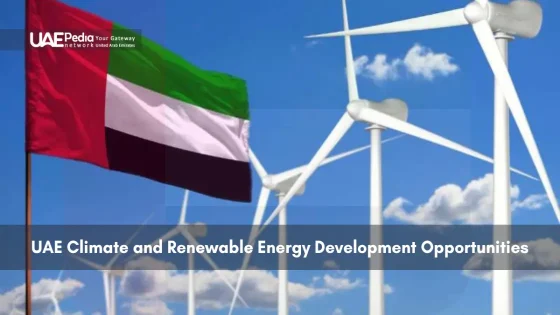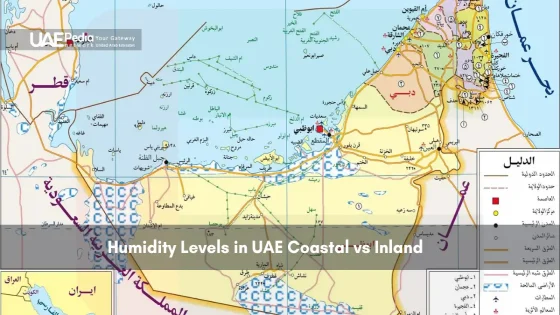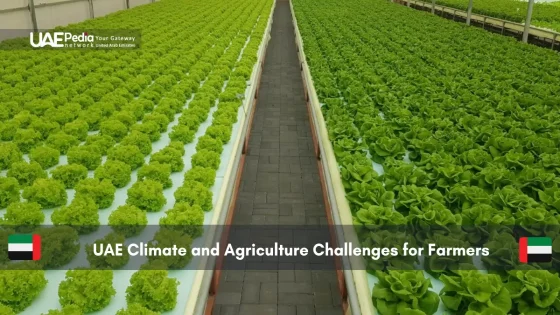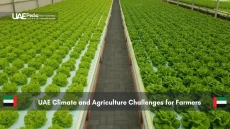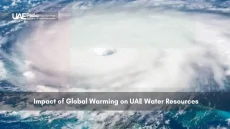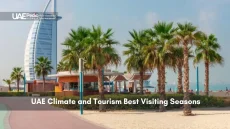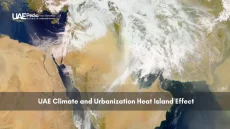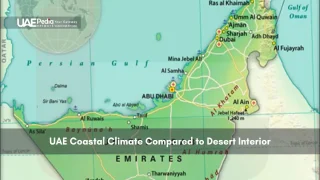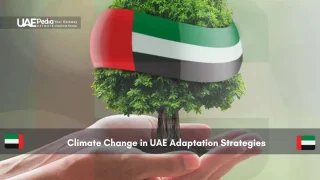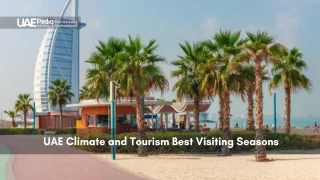What if a nation built on oil could rewrite its future through sunlight? The United Arab Emirates now directs $54 billion toward renewable energy projects by 2030—a bold pivot for a country synonymous with fossil fuels. This desert powerhouse isn’t just chasing trends; it’s engineering a blueprint for balancing economic ambition with planetary responsibility.
From Abu Dhabi’s sprawling solar farms to cutting-edge hydrogen hubs, the region’s renewable energy geography reveals a mosaic of innovation. Take the Mohammed bin Rashid Al Maktoum Solar Park: once completed, its 5,000 MW capacity could power half a million homes while slashing annual emissions by 6.5 million tons. Projects like these aren’t vanity metrics—they’re part of a national strategy to source 50% of electricity from clean sources by 2050.
But here’s what’s fascinating: this transformation isn’t just about megawatts. It’s reshaping careers (think 50,000+ new green jobs), redefining infrastructure, and proving that oil-rich economies can lead the charge against climate change. The secret sauce? A cocktail of visionary policies, tech investments, and that relentless Emirati hustle to turn sand and sun into sustainable gold.
- 📈 Targeting 44% clean energy & 70% carbon reduction by 2050
- ☀️ Leveraging 350 annual sunny days for solar dominance
- 💡 Blending solar parks with next-gen nuclear and hydrogen tech
Understanding UAE’s Commitment to Climate Action and Sustainability
Imagine a desert nation trading black gold for sunshine as its new currency. This pivot forms the backbone of an ambitious energy diversification plan, blending economic foresight with environmental stewardship. By 2050, the goal is clear: net-zero emissions through a 50% clean energy mix paired with nuclear and hydrogen innovations.
From Oil Revenues to Green Investments
The shift isn’t theoretical. Over 70% of GDP once flowed from fossil fuels—now, strategic investments in solar parks and wind farms aim to slash carbon output by 70% within 26 years. Consider these milestones:
| Initiative | Target Year | Impact |
|---|---|---|
| Clean Energy Mix | 2050 | 50% renewable electricity |
| Carbon Reduction | 2050 | 70% emissions decrease |
| Green Jobs | 2030 | 50,000+ opportunities |
Leadership That Bridges Borders
Hosting IRENA’s headquarters in Abu Dhabi signals more than symbolism—it’s a launchpad for global tech sharing. As one official noted:
“Our strategy 2050 isn’t just about megawatts. It’s about rewriting the rulebook for desert nations worldwide.”
This collaborative spirit extends to transparent policy updates shared through UN channels, earning international trust. For sustainability enthusiasts, the message rings clear: even oil-rich economies can lead the charge toward a balanced future.
Driving Economic Growth: Renewable Energy Innovations and Investments
Picture an economy where sand dunes and solar panels fuel progress. Here, tech startups and legacy oil gas giants co-create solutions—a dynamic reshaping the nation’s industry landscape. At the heart of this shift? A $2 billion NextGen FDI program luring global climate innovators to set up regional hubs.
New Investment Ecosystem and Climate Tech Initiatives
Solar farms now share spreadsheets with venture capitalists. Since 2022, foreign direct investment in clean energy projects jumped 37%, creating 14,000 jobs in smart grids and battery storage. Take the Desert Bloom Initiative: its AI-driven irrigation tech cut water use by 63% while boosting crop yields—proof that sustainability drives profit.
Balancing old and new remains key. While fossil fuels still anchor 30% of GDP, 83% of recent investments target carbon-neutral infrastructure. A Dubai-based fund manager puts it plainly:
“We’re not abandoning oil—we’re making it smarter. Every rig now funds three solar panels.”
Policy plays matchmaker. Tax breaks for green startups and streamlined permits for hybrid energy plants accelerate growth. The result? A $19 billion surge in tech partnerships since 2021, turning sun-scorched plains into innovation hotspots. This isn’t just business—it’s economic alchemy, transforming rays and ideas into shared prosperity.
Exploring Technological Breakthroughs in Renewable Energy Projects
Imagine a desert where mirrors outnumber camels and silicon panels dance with sunlight. This isn’t sci-fi—it’s where engineering meets ingenuity to reshape how nations harness natural resources. At the forefront stands the Mohammed bin Rashid Al Maktoum Solar Park, a titan among renewable energy projects that’s rewriting the rules of desert power generation.
Solar Power Pioneers and the Desert’s New Crown Jewel
Spanning 77 square kilometers—larger than Manhattan—this sunlight-powered colossus will generate 5,000 MW by 2030. That’s enough electricity for 1.3 million homes. But here’s the twist: its robotic cleaning systems battle desert sand daily, using 30% less water than traditional methods. Engineers designed tilt angles that maximize light capture while minimizing dust buildup—a game-changer for arid regions.
| Technology | Capacity | Innovation |
|---|---|---|
| Photovoltaic Panels | 2,327 MW | Self-cleaning nano-coating |
| Concentrated Solar | 700 MW | Molten salt storage (15 hours) |
| Hybrid Systems | 1,973 MW | AI-driven energy distribution |
Beyond Sunlight: The Nuclear-Carbon Tango
While solar takes center stage, quieter revolutions unfold elsewhere. Abu Dhabi’s Barakah nuclear plant now supplies 25% of the nation’s energy needs, its reactors designed for 60-year lifespans. Meanwhile, carbon capture systems at industrial sites trap emissions equivalent to 5 million car trips annually. A project lead recently shared:
“We’re not choosing between technologies—we’re building an orchestra where every instrument plays its part.”
These breakthroughs didn’t emerge from vacuum tubes. Public-private partnerships fuel 83% of clean tech projects, blending government vision with corporate agility. From drone-mounted panel inspectors to AI-optimized wind farms, the energy strategy 2050 isn’t just a plan—it’s a live laboratory proving deserts can birth tomorrow’s power solutions today.
Policy, Strategy, and Investments: Shaping the UAE’s Energy Transition
How does a nation pivot its entire economic engine without missing a beat? The answer lies in blueprints like the Energy Strategy 2050—a masterplan steering $54 billion toward cleaner power while keeping traditional industries humming. This balancing act isn’t just about dollars; it’s rewriting how societies evolve.
Insights from Energy Strategy 2050 and National Communications
The strategy splits investments three ways: 33% for solar, 28% for nuclear, and 39% for emerging tech like green hydrogen. Updated National Communications reports—like the 2023 UN submission—track progress with military precision. One official revealed:
“We share every kilowatt and carbon metric publicly. Transparency builds trust faster than any press release.”
| Policy Lever | 2025 Target | Current Progress |
|---|---|---|
| Solar Capacity | 14 GW | 9.2 GW (66%) |
| Carbon Capture | 5 Mt/year | 3.1 Mt/year |
| Grid Modernization | $4.2B | $2.8B spent |
Balancing Fossil Fuel Investments with Clean Alternatives
Oil still funds tomorrow’s experiments. For every $1 spent drilling, $0.40 now flows into carbon capture projects. Take the recent ADNOC deal: $15 billion for new wells paired with $6 billion for CCS tech. It’s not either/or—it’s “both, but smarter.”
Regulators sweeten the pot for green pioneers. Tax holidays for battery startups and fast-track permits for hybrid plants keep innovation sprinting. As one Dubai investor put it: “Policy isn’t just paperwork here—it’s rocket fuel for change.”
Navigating the Challenges and Opportunities of Energy Transformation
Can relentless heat and swirling dust fuel a cleaner tomorrow? The desert’s extremes test every bolt and panel, yet engineers here treat obstacles as innovation invitations. Let’s unpack how grit meets ingenuity in this high-stakes energy transition.
Environmental and Technical Challenges in Harsh Climates
Solar farms here battle triple threats: 122°F summer heat warping materials, sandstorms scouring surfaces, and coastal humidity corroding circuits. Traditional oil gas infrastructure faces its own trials—aging pipelines in salt-rich air require 40% more maintenance than global averages. Recent data reveals:
| Challenge | Impact on Renewables | Oil & Gas Counterpart |
|---|---|---|
| Sandstorms | 15% efficiency drop | Pipeline corrosion |
| Extreme Heat | Panel lifespan reduced by 8 years | Cooling system failures |
| Humidity | Inverter malfunctions ↑ 22% | Storage tank leaks |
Overcoming Risks With Innovative Renewable Solutions
Enter self-cooling solar panels coated in nanotech dust repellent—a local invention cutting cleaning costs by 63%. Wind farms now use AI to predict sand dune shifts, while hydrogen plants recycle 91% of waste heat. As one Dubai engineer shared:
“We’ve stopped fighting the desert. Now we collaborate—using its rhythm to boost renewables reliability.”
These adaptations ripple beyond the sector. Startups developing sand-resistant turbines attracted $280 million in 2023 alone. Maintenance drones patrolling solar arrays created 1,200 tech jobs last year. Every solved challenge becomes a blueprint for arid regions worldwide—proof that harsh climates can spark humanity’s cleverest action.
Examining UAE Climate and Renewable Energy: Market Trends and Future Outlook
What if sunbaked dunes became the new oil fields? The region’s energy transition now unfolds through solar arrays doubling as economic engines—where every megawatt generated sparks three jobs and slashes carbon footprints. Recent data shows clean power initiatives attracted $8.4 billion last year alone, with 72% flowing into next-gen storage and smart grid tech.
- Solar capacity grew 19% annually since 2021—enough to light 800,000 homes
- Emissions per megawatt-hour dropped 33% through AI-optimized plants
- Oil giants now allocate 41% of R&D budgets to hydrogen and carbon capture
The Mohammed bin Rashid Solar Park exemplifies this shift. Its latest phase—powering 270,000 residences—cuts annual CO₂ by 1.4 million tons. Yet traditional oil gas still fuels progress: every dollar from crude sales now funds $0.38 in green projects, per the national strategy.
| Sector | 2023 Investment | 2030 Target |
|---|---|---|
| Solar Generation | $3.1B | 14 GW capacity |
| Hydrogen Hubs | $1.8B | 1.4M tons/year |
| Grid Modernization | $2.5B | 95% efficiency |
Challenges persist—sandstorms still shave 12% off panel output yearly. But innovators respond with dust-repellent coatings and modular wind farms. As one Abu Dhabi engineer noted:
“We’re not just building infrastructure—we’re coding resilience into every electron.”
The road ahead? Expect tighter global partnerships—65% of recent deals involve European or Asian tech firms—and AI-driven electricity markets that trade power like crypto. While fossils anchor today’s economy, tomorrow’s clean energy playbook is being written right here, one sunbeam at a time.
Charting a Path Forward: Embracing a Sustainable Future in the UAE and Beyond
Where ancient trade routes once carried spices and silk, today’s caravans transport solar innovations and smart grids. This nation’s blueprint—melding Bedouin resourcefulness with Silicon Valley ambition—offers a masterclass in balancing heritage with tomorrow’s needs.
The numbers speak volumes: 50% clean energy targets by 2050, $54 billion funneled into tech like green hydrogen, and AI-driven grids that predict power needs before clouds form. But the real magic lies in collaboration—oil giants funding wind farms, startups repurposing drilling tech for geothermal projects, and global partners co-designing emission-slashing solutions.
Want to join this energy transition? Invest in companies blending AI with solar efficiency. Advocate for policies that reward carbon-neutral industry practices. Explore partnerships in the sector through platforms like the National Energy Strategy Portal.
From robotic panel cleaners to desert-grown algae biofuels, these advancements aren’t just local wins—they’re global playbooks. As emissions drop and renewables rise, one truth emerges: sustainable progress thrives when tradition dances with innovation.
The country leverages oil revenues to fund its clean energy transition while diversifying its economy. Projects like the Mohammed bin Rashid Al Maktoum Solar Park and Barakah Nuclear Plant show how fossil fuel investments coexist with ambitious climate targets under Energy Strategy 2050.
Despite extreme heat, the Emirates’ 340+ sunny days annually create ideal conditions for photovoltaic tech. Innovations like solar panel cooling systems and AI-driven maintenance at Dubai’s solar parks maximize efficiency even in harsh environments.
As a major hydrocarbon producer, the Emirates invests in carbon capture, utilization, and storage (CCUS) to reduce emissions from hard-to-decarbonize industries. Projects like Al Reyadah facility aim to capture 5 million tons of CO₂ annually by 2030.
The plan targets 50% clean energy in electricity generation by 2050, requiring smart grids and hybrid systems. We’re seeing rooftop solar expansions, waste-to-energy plants like Sharjah’s, and cross-border partnerships to share renewable resources regionally.
Abu Dhabi’s Masdar City has attracted + billion in green tech investments since 2006. Foreign partnerships—like EDF’s involvement in Dubai’s solar park—accelerate tech transfers while meeting the Emirates’ 44% clean energy capacity target by 2030.
Absolutely. The Barakah plant provides 25% of the nation’s electricity with zero emissions, complementing intermittent renewables. This “all-of-the-above” approach ensures grid stability while cutting carbon footprints across industries.
Water scarcity and rising temperatures drive R&D in agrivoltaics (solar farms that grow crops) and AI-powered irrigation. The UAE’s 100% desalinated water supply also pushes solar-powered desalination projects, blending necessity with sustainability.
